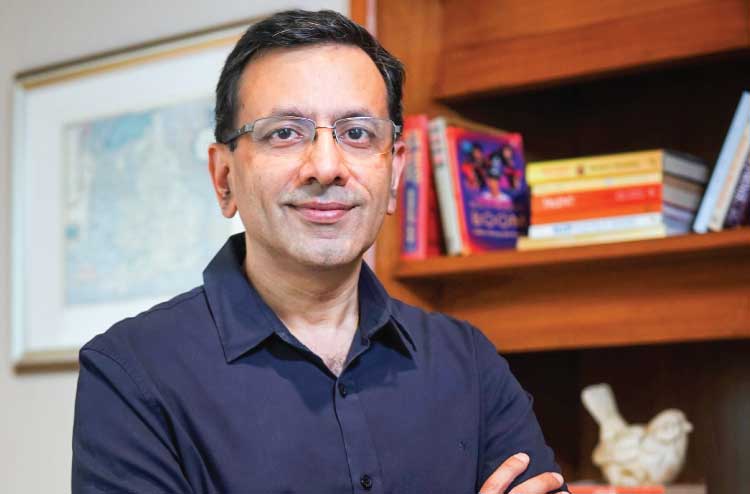Q] What are some of the key long-term and short-term plans Google has for India?
The mission in India, which is somewhere the mission for global as well, is that we want to make the internet helpful for a billion Indians. Internet is still in a nascent stage in India. Only one-third of the country uses internet, two-thirds are still internet dark in some ways. The second mission that we have within the context is an enabled Indian digital economy to become a leading digital economy. The Indian digital economy is roughly around $450 billion today. We believe that over the next five years it could become a trillion-dollar industry because as a society and community we are seeing a dramatic shift in embracing digital economy both in people and businesses. That has been accelerated through COVID in the last nine months.
Google also believes that we need to provide different solutions for emerging Internet users than for the first-time internet users. Therefore, this concept of next billion users was set up around five years ago. We need to cater to billions of people on the internet and create solutions for the next billion people that will come our way. That is how a lot of things are born in Google. Like Google Pay that is an outcome of a deep understanding of internet users today and hence it is designed and developed in India and is now in the process of being rolled out globally. Our understanding is that when you design products and services keeping India in mind you find better answers.
Q] What are your exact plans with the $10 billion investment announced in July this year?
Fundamentally, we felt that the first thing we want to do is make the internet even more accessible than it is today. A key step towards it was ensuring that smartphones are made affordable. Therefore, the first announcement that we did was a partnership with Jio bringing a high-quality smartphone at a very affordable price. This is to be produced in local Indian languages and if you don’t have solutions for a billion Indian languages there is no business in play.
Secondly, solving challenges that are uniquely Indian. We use the power of UPI in India for GPay to drive payments and that has become the norm of the day. The government has played an important role in creating a layer of technology in which so much more innovation can happen. We did something for Google Bolo which is now called Google Read Along, which is for kids to learn at a very early age and in the process of launching it globally.
Thirdly, we want to use Artificial Intelligence (AI) and technology to do good for the society. Our learning has been that during COVID, more than before, the people who have been hit the hardest are the poorest in this country.
Areas we believe we need to work in are our agriculture sector because 50% of people in India are involved in that occupation and that sector contributes to 15-16% of the GDP. Agriculture is one area where technology can help and we hope to partner with the government and Niti Ayog for the same. Secondly, in terms of health we are moving big time into the sector as Google to understand how we do something with AI and ML. We have done some very interesting work globally, not necessarily relevant for India, but it showcases the power of technology. Thirdly, education is where there is a huge appetite but there is not enough quality.
Therefore, the challenges that Google is solving more dramatically in India are things like language, affordable smartphones, agriculture, health, etc.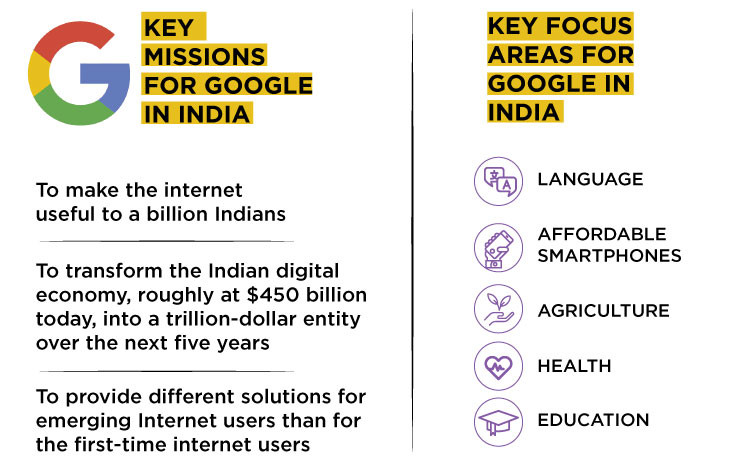
Q] With so many investments and plans in the pipeline, at the base level, how are you joining the dots when it comes to ad revenue and doing things which do not have an immediate connotation?
Language and affordability will grow the core business. For Google, let’s look at search in India. Let’s say three million people speak and understand English. Even if they understand English, they consume content in their language. If you want to see the next leap of growth in India, we need to do it on the back of Hindi, Tamil, Telugu, etc. Language and affordability are the key pillars on which we will build the next stage of our business as well. It should be good for the consumer but it will be good for business too.
If we talk of video consumption on TV, 2% of content consumption is in English and 98% is in local language. YouTube might go down the same path making the scope for languages more meaningful. On search, people may not type in their request, they may speak. We need to be at the cutting edge of language to get the end-user’s Indian language. We must also have technology where we can subtitle a Hindi show in Malayalam and so on. These two pillars will also drive the next phase of advertising growth in this country and that is an important thing we need to secure. As we do more of it, we will create the opportunity to earn more from it and get the fuel to keep investing back into the Indian business.
Q] With over 40 OTTs being launched in the last few years, how do you make sure YouTube continues to be a leading brand?
YouTube is in a very interesting place at the moment. The two things YouTube has done brilliantly in this country is the diversity of content that it has is unmanned in India compared to any other platform. Secondly, the democratisation of content creation is the real big issue globally and even more in India. What I mean by diversity is that if you look at TV content today it is fundamentally entertainment content and now in some way, topped up with the news. If you look at YouTube consumption online in India, it started with entertainment like Bollywood Music and some shows. But it moved into in a very interesting space of ‘experiences’. On YouTube, you recognise that the talent in this country is multi-faceted. Things that were never previously explored are done through YouTube. The third piece of content is education and learning because that is what Indians desire. YouTube has created a pool of content of entertainment, experiences and education which gives them a diverse set of content. No one in the market today has all of it.
Content creation has been a prerogative of a very few in this country. What YouTube has done, however, is saying if you can use a mobile, you think you are creative and can create content I’ll help you make money out of that. Today we have 2,500 creators in India who have one million followers. So, the funnel of content creators has changed from almost hundreds to a million in the last 10-15 years.
We want to play in the area of creating millions of content creators and unleash the creativity of this content enabling it by providing technology and tools for them to create that content. The vision we see for the future of content is billions of creators and the best of technology being deployed. YouTube should continue to be the catalyst for a creative revolution in this country.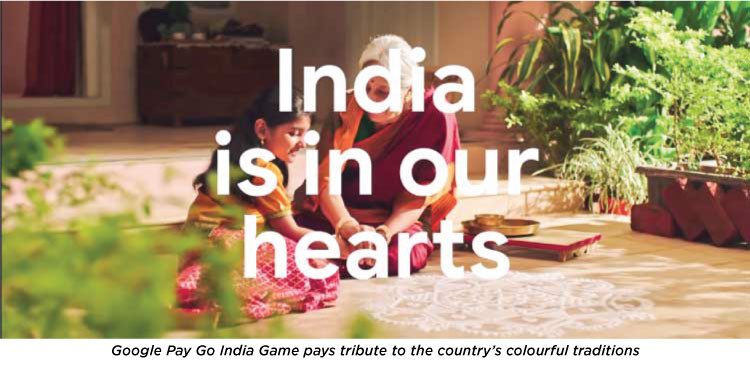
Q] The advertising industry was hit hard by COVID but to a certain extent the slowdown began even before that. How do you see the overall ad market growth in India in the next three years?
Before I answer that I want to discuss two big attitudinal shifts that have taken place in the society in the last few years. And COVID has accentuated it further. There is a big attitudinal shift in the society in the way mobile is perceived. Now it is your personal screen. Secondly, how much is it used to make payments. As of last month, the number of mobile banking transactions through UPI was reported to be seven crore a day.
Given that the number of screens has gone up dramatically from 20 crores to 65 crores on the back of 45 crore smartphones, the amount of consumption growth that you will see on content using mobile phones will just keep growing. This will be true for everyone, whether it is Hotstar, Netflix or YouTube. We will see the consumption grow from 3 ½ hours per day per consumer on an average put together will go up to 7-8 hours, depending on how much data capacity can be increased through 4G or 5G because it will be individual streaming.
The business models can now be many, including subscription as a business model. So, though the TV industry had been built on 70% advertising and roughly 30-40% on a subscription, in digital that 40% was missing. So both advertisements were limited and subscription was missing fully. Now at the back of these changes of consumption and payment, the market is going to explode on subscription plus advertising put together in a very dramatic way. Different companies will have different strategies around them.
From an advertising industry point of view, if you get a lot of consumers to come on digital to consume any content, it will equally target consumers. During COVID, people’s concern on cash has gone up and everyone wants to conserve their money. Digital provides now at scale the opportunity to target. Therefore, you don’t need to target every consumer who is watching a show every night or a match or a TV show. You can now decide that you want to talk to only 10% of them and do it effectively. This will allow for an explosion of consumption of content but also an explosion in advertising revenues driven by Digital. Because of the current environment, small and medium enterprises are adopting the technologies faster than big companies. Both the adoption of technology and the ability to target will put SMEs online in a very dramatic fashion. When I look back at a 3 to 5-year trend I see the advertising businesses growing dramatically much faster than the last 5 to 10 years on the back of these fundamental shifts of consumption, payments through subscription models that will emerge and the fact that people can target consumers and conserve cash.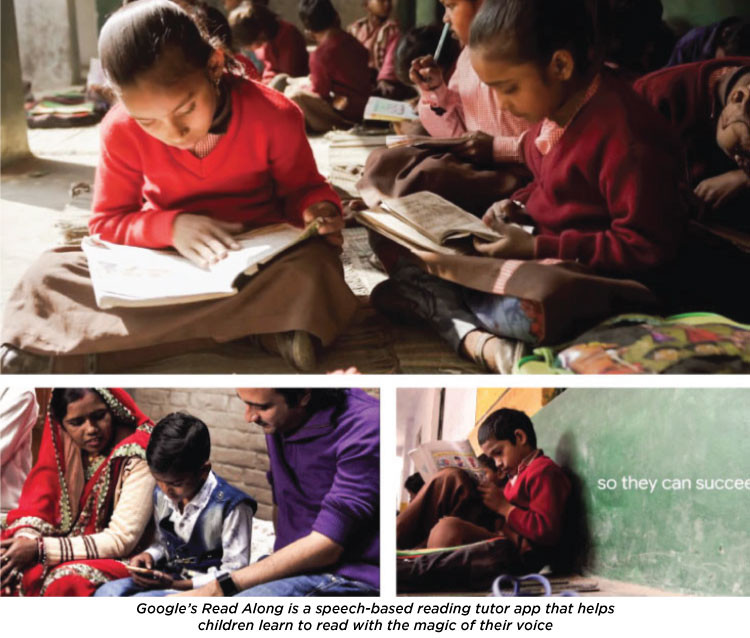
Q] How much will the COVID-led slowdown affect the projected growth numbers?
Our per capita income decreased last quarter when GDP came down and that hurts the spending ability and marketing money. Even though incomes came down, a lot of expenditure on travel or buying also reduced. Still, the ability to spend on the things that I desire has still not come down dramatically. So consumers may not eat in a restaurant, but if they want to order good cheese on Amazon, they would. The spending won’t come down in some of the core areas people care about.
The second big change is retail. People use to buy stuff from their next-door grocery store and now the growth of e-commerce for these items has grown in the last six months. The businesses, which are now growing, are those that are spending marketing money. The businesses that are not growing are the ones that weren’t spending marketing money earlier. New markets are emerging like fintech, e-commerce and ad tech. There are players in ed-tech who are now creating products that have never existed before. They all have the potential to become ‘over a billion dollar’ businesses.
Q] How can digital news publishers garner revenue in India given that the market is so fragmented?
The issue of legacy mediums is real in TV or Print because of the nature of the current environment. The number of copies that you deliver has come down effectively in terms of newspapers. So the number of people that you can reach out to through a newspaper has come down. But the number of people that have been touched through the internet is growing. My learnings come from my last role at Star. You need to start solving for this new medium with a fresh pair of eyes. That is what Hotstar did in terms of the content they wanted to provide and how they made it relevant for audiences to spend time on the platform. It shouldn’t be just another channel – you need to have the right content strategy for it because the audiences are different. We need to use this opportunity for content creation and build the brand. Some of the news publications have spent decades in building their brands with the current set of their users.
But those brands must not be growing effectively because there are more than 550 million new internet users today. In Star, my learning was that it was a creative organisation but it had to build an internet and technology muscle. That is not only true for Star but for any company that is trying to build a business in the digital world. This is going to be a painful transition. Even for Hotstar, it started with zero revenues. It has taken a few years to get a big subscription and advertising revenue and that is true with any digital company. There needs to be an embracement of this new world in a very positive manner for it to shift.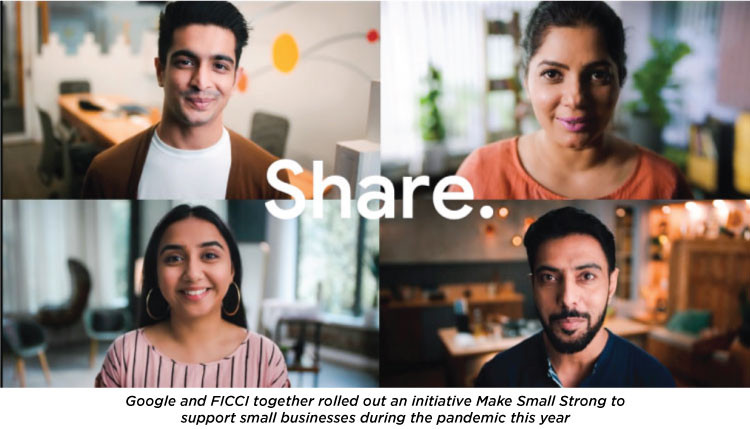
Q] Given the trajectory of your growth, perhaps you are likely to become 2X of the size of most media companies. That kind of enormous size and power concentrated in one company sometimes become a concern for other businesses. How is Google India dealing with the rise in power and keeping away from competition?
The real business for us is the advertising business and the Cloud business. In both these businesses, our share of the total market is still very small. So digital is only around 25%-30% of the total market and we have a share of that digital market.
We are a small share of the total advertising market. Similarly, when you look at Cloud there are much bigger technology companies in India. So our share in the market in both the advertising and the technology cloud front where we are enabling businesses to transform is a very small share of the total. From an Indian perspective, I don’t think that we are so big at this moment.
But we are an important part of the consumers’ life and people deeply care about us. When COVID happened, a lot of time was spent on providing the right information and getting it through in different languages and adapting to mobile and audio formats. We did a partnership with Vodafone where people could call a number and learn more about COVID. In those few months, we got close to 4 billion queries in India on COVID.
We also did a very big thing on Google maps on enabling food shelters in the country. There were many food shelters but people did not know how to go out and find it. We worked in partnership with many state governments to ensure that Google Maps had the location for it. In hundreds of cities, centres were created and thousands of people could use Google Maps to get there. Google Pay alone for the PM Cares fund collected over Rs 120 crore on the back of many people donating.
For me, the most important thing is ensuring that we are doing something meaningful and valuable so that we are helping society and being responsible in everything we do. This is where our mission also comes in play to make the internet available for a billion Indians. Revenue and business will follow if we are doing the right things so that the consumer’s affinity remains.
Q] You will soon complete your first year at Google. How did you navigate your new role in a pandemic year? What has your journey been like this year?
This has been a unique year for me, to be honest. I joined in January and we went on work from home early March in India at Google. In the eight weeks when I could physically travel, I went to all the offices in India in Mumbai, Gurgaon, Bangalore and Hyderabad. I must say that the silver lining for me is that COVID accelerated my learning curve. The good thing was, since we went digital, the physical world couldn’t constrain me. Given things went digital, I could meet people not only in India but anywhere in the world at the click of a button. We formed cross-functional teams in India for the response to COVID and we were meeting every day virtually. Therefore, the engagement and depth of engagement that happened with people in India and abroad went up dramatically. That is quite contradictory to the expectations I had at that time where I had thought it will take me much longer to learn about people and the business.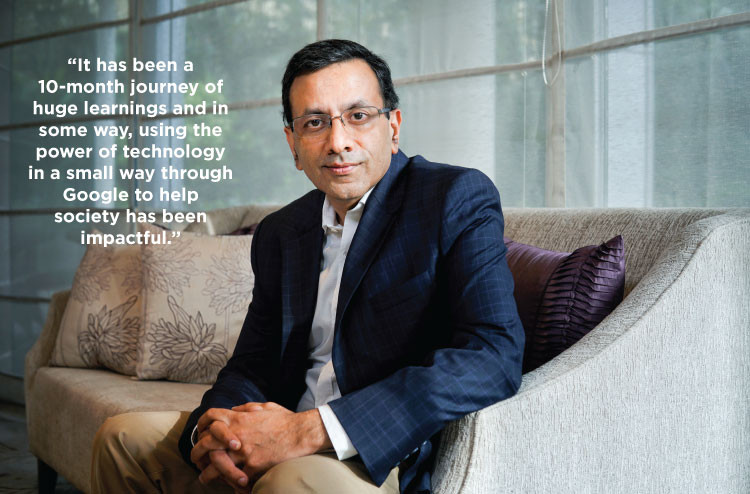
However, I’m still in a learning phase but blessed that I’m able to engage very deeply and people at Google have welcomed and embraced me in a positive way. It has been a 10-month journey of huge learnings and in some way, using the power of technology in a small way through Google to help society has been impactful. We took Google Read Along deeper in the world on the back of COVID and GPay because people needed it more during this time. We did a lot of innovation on YouTube be it on learning or on shorts only for India.
Google has a unique culture and I’m learning through my time here. It is an organisation with a very high level of equity and every person can make a difference in Google. Everyone is a boss in some way at Google, and everyone can make a difference in the areas they are working on.




